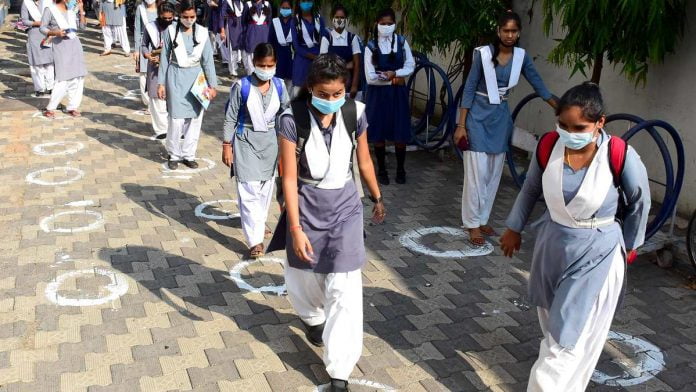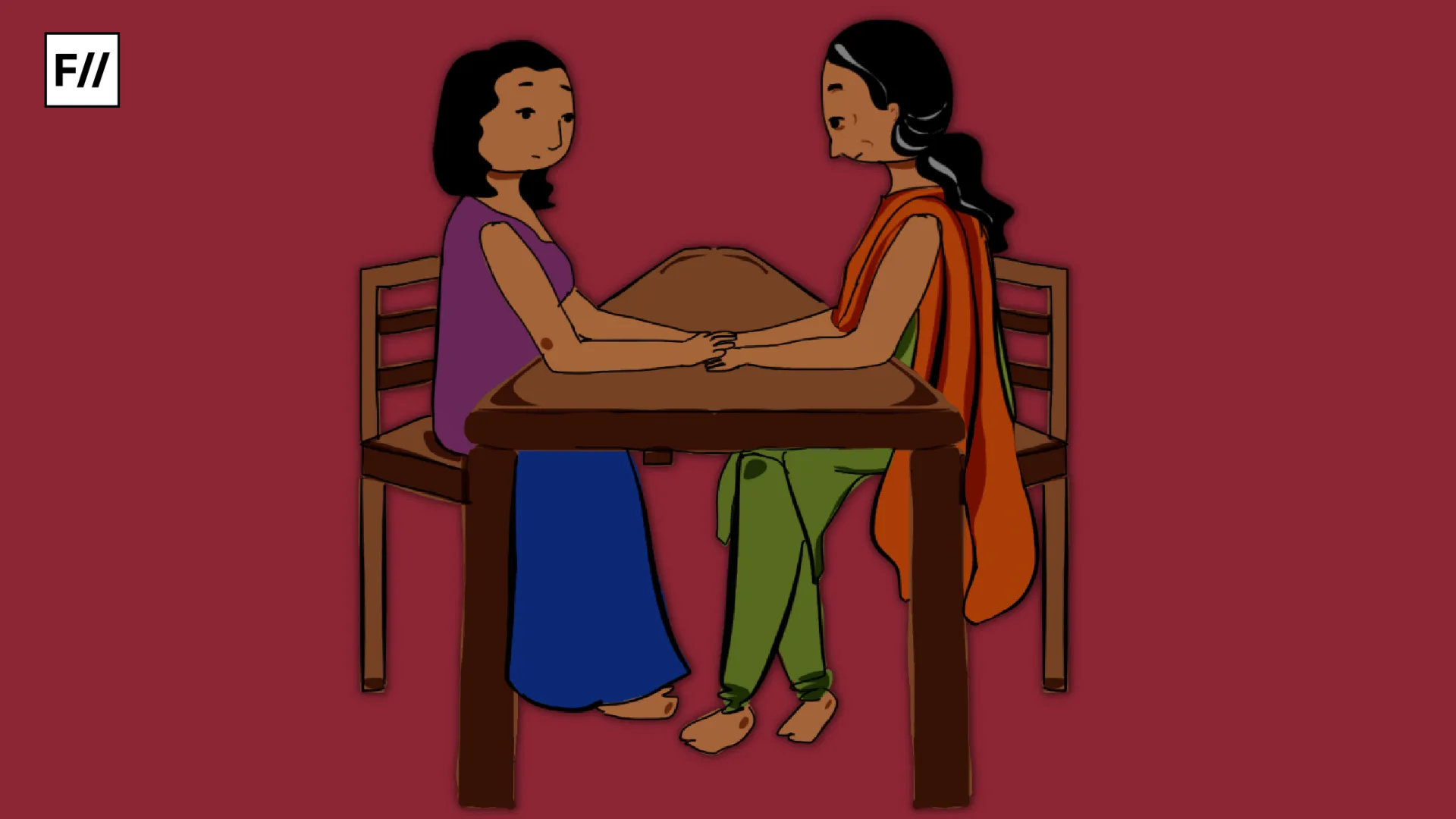“My son’s response to everything has become really harsh — the anger and the tantrums,” said Jyoti*, mother of a 10-year-old and a homemaker. “I feel guilty because I don’t have the time to occupy him positively as I live in a joint family and have to take care of the house.”
Much like Jyoti’s son, or worse, children are growing up in the midst of a crisis that devoids them from the stimulation they need in their formative years.
“The number of children who are hungry, isolated, abused, anxious, living in poverty and forced into marriage has increased. At the same time, their access to education, socialisation and essential services, including health, nutrition and protection, has decreased. The signs that children will bear the scars of the pandemic for years to come are unmistakable,” said Henrietta Fore, Executive Director of UNICEF.
CHILDLINE 1098 helpline received 3.07 lakh calls between March 20-31, 2020 out of which 30% were about child abuse, physical health (11%), child labour (8%), missing and run away children (8%) and homeless children (5%).
Since the beginning of the lockdown, India has seen a 50% increase in calls on the child helpline. CHILDLINE 1098 helpline received 3.07 lakh calls between March 20-31, 2020 out of which 30% were about child abuse, physical health (11%), child labour (8%), missing and run away children (8%) and homeless children (5%).
The pandemic’s impact on children is influenced by various factors such as developmental age, gender, education, socio-economic privilege, quarantine conditions, fear of infection or familial atmosphere.
The early years of a child’s development lay down the foundation for their emotional, social and cognitive development. It determines their long-term growth and well-being. As a result, the dysfunctional environment created by the pandemic may have a greater impact on them when compared to adults.
Isolation, fear and anxiety
“One thing which I have seen throughout children is a difficulty in emotion regulation. It shows differently in different age groups. Younger children (upto 6 years) with no prior issues have suddenly started exhibiting anger, outburst or defiance. Whereas older children (7-15 years) are experiencing a lot of anxiety, disturbed sleep patterns and poor academic performance,” said Krupali Joshi, a school counsellor.
Not having the ideal school routine and outdoor activities does not leave much room for children to explore their academic and extracurricular interests. This limits their social and physical activities for a long time and can make these children clingy and overly dependent on their parents.
Also read: COVID-19: Why Is Social-Emotional Learning Important For Children
At the same time, the pandemic has given many reasons for primary caregivers to be emotionally unavailable or physically separated from their children. This parental separation makes a child more prone to developing mental health issues such as anxiety, fear and sadness. A study found that many parents conveyed that their children felt ‘uncertain, fearful and isolated’. They also experienced nightmares, irritability, sleep issues, loss of appetite and aggression.
“Children are not able to socialise properly and are involved in pseudo-socialising i.e. social media. The outcome of this is really unpredictable but not at all on the brighter side,” said Vaidehi Bhanushali, hypnotherapist, EFT practitioner and founder of Beyond Therapies.
“Teenagers are dwelling into making social media their focus of attention. This is an age where you seek attention and validation from your peers; which used to happen naturally in school or college. But now all of them have only one way to get acceptance — social media. Social media is like a drug: The rush and release of dopamine when someone texts you is exactly the rush you feel through cannabis or alcohol. It is just that it is released in a lesser amount. But if you spend 10-12 hours a day on social media, it may release the same amount of dopamine as three bottles of alcohol,” she added.
While the internet has been the only way we can afford to maintain contact with the outside world, the negative effects of its overuse can’t be ignored. A study tied social media with increased feelings of social isolation. Another British study linked it to erratic sleep patterns and further associated it with depression, weak memory, poor physical health and academic performance.
Underprivileged kids and children with special needs.
The pandemic has impacted at least 40 million children in India coming from lower socio-economic backgrounds. Their homes that are meant to keep them safe are often sites of violence and abuse. The stress caused by financial worries, uncertainty about food and shelter, health anxieties, or home confinement are often displaced onto the child.
Almost 35% of the 92,203 interventions reported by ChildLine, a nodal agency of the Union Ministry of Women and Child Development, were about child marriages — out of which 91% were girls and 97% were minors.
Almost 35% of the 92,203 interventions reported by ChildLine, a nodal agency of the Union Ministry of Women and Child Development, were about child marriages — out of which 91% were girls and 97% were minors. They marry off their daughters to save money as the pandemic has pushed such families deeper into poverty.
Domestic violence against children is a common, yet a silent risk factor during natural disasters like this pandemic. It can lead to death, injury, impaired nervous system and brain development and health risk behaviours.
“Parents who have lost their jobs take out their frustration on the child. The verbal and physical abuse between the parents and against the child that existed before has amplified due to the pandemic. Before, counsellors or psychologists could do interventions with the family members and social workers, but now because of their lack of access to technology and social distancing even our hands are tied. We could have done much more if we were meeting the child on a regular basis,” said Annabel George, a psychologist who has worked with underprivileged kids.
Also read: Children In COVID-19 Lockdown: Abusive Households And Street Children
Children with special needs (autism, learning disabilities, obsessive-compulsive disorder, ADHD and others) also receive the short end of the stick. A precarious atmosphere that does not match their routine may exacerbate their symptoms. Closure of facilities such as special schools could backtrack any progress made with them. In India, digital tools are not accessible to most children with special needs coming from poor and remote areas. Online mediums pose a lot of learning obstacles in cases of attention deficit or hyperactivity disorders. They need extra support, individualised attention, and modified lessons to keep up with their learning from home.
“A lot of milestones have been missed, especially for the younger children, a year or two of no schooling and being socially isolated. It is important to identify these vulnerable groups of children and assess where they stand emotionally, socially, and academically. They will need a lot of hand-holding,” said George.
India’s mental health crisis: A shadow pandemic
In 2019, India only had 0.75 psychiatrists per one lakh individuals — as opposed to three psychiatrists per lakh in developed countries — according to a letter written to the Indian Journal of Psychiatry. A study reported a 67.7% increase in online media reports of suicidal behaviour during the COVID-19 lockdown.
Our mental health infrastructure clearly does not have the bandwidth to handle this mental health catastrophe. And how this will affect children in the long-term is yet to be determined.
Even previous pandemics such as Severe Acute Respiratory Syndrome (SARS) have left people with lasting psychological imprints — with 41-65% of the survivors showing psychological symptoms.
We can channel community efforts such as Vidharbha Stress and Health programme, a project launched to cater to the mental health needs of rural communities in Vidarbha. Instead of placing the complete onus on primary and secondary mental health workers, we could form support groups for the unemployed or train people in suicide prevention techniques with the help of NGOs.
Joshi also points out a common behaviour noticed among parents, “I have had parents who were not willing to acknowledge that what their child might be going through is mental in nature. Parents usually don’t notice until the child is getting poor grades. And they love attributing it to the child’s laziness.”
“We can try to show some unwaved compassion to each other. Parents can indulge with their kids in a variation of DIY activities for at least half an hour daily. Communicate with their child and be real about their experiences with the pandemic and bring them in a space where they can also share their experiences,” said Bhanushali.
You can also donate to mental health charities and organisations and check up on anyone you know who may not have the same access to resources as you do.
These children are the ones tasked with upholding our posterity. Whether the damage done is reversible or not, is a question that still remains unanswered. The most we can do is try to palliate the negative impact on an individual and community level.
References
* names have been changed to protect identity
Featured Image Source: ANI
About the author(s)
Priyanka is a feminist and an aspiring journalist. Her respect for the significance that words carry in shaping our beliefs stems from her passion for our social, political, environmental, and economic ecosystem.




